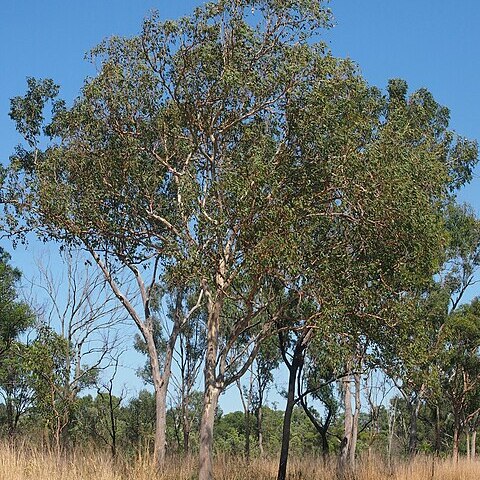Tree to 20 m, deciduous. Bark white, grey or tan, often powdery. Juvenile leaves alternate, broadly lanceolate to ovate, slightly discolorous. Adult leaves alternate, orbicular, cordate or rhomboid, rarely lanceolate, rounded or apiculate, thin, lamina 7–13 cm long, 5–9 cm wide, green, concolorous; lateral veins visible, at 45°–55°; intramarginal vein up to 2 mm from margin; petiole angular or terete, 30–40 mm long. Umbels 3–7-flowered; peduncle quadrangular, 3–7 mm long; pedicels absent or to 3 mm long. Buds ovoid; operculum hemispherical, sometimes apiculate, 3–5 mm long, 5–6 mm wide; hypanthium hemispherical to obconical, 3–5 mm long, 5–6 mm wide. Fruits hemispherical to turbinate, several-ribbed, 5–6 mm long, 7–9 mm wide; disc moderately broad, level or convex; valves 3 or 4, exserted.


